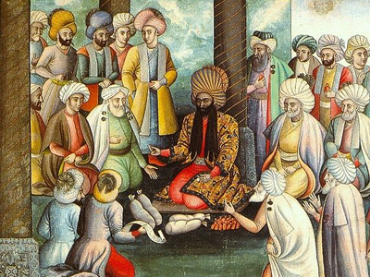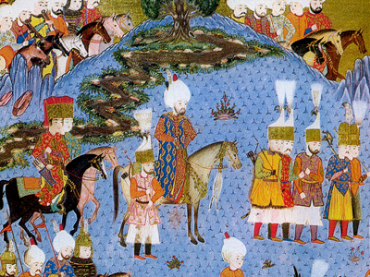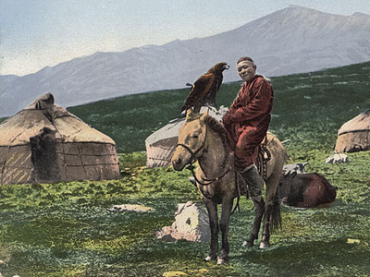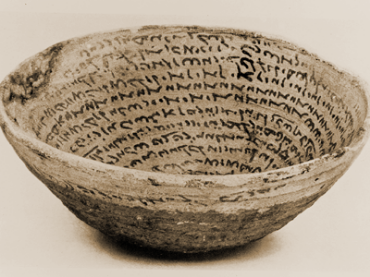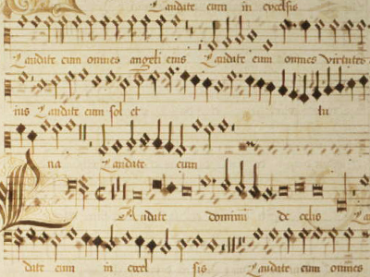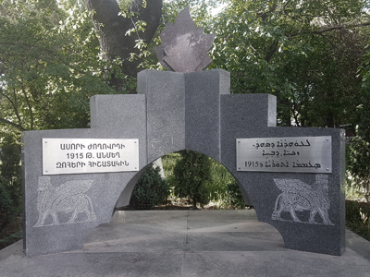History
Syrians and the Others
Cultures of the Christian Orient in the Middle Ages
Edited by Basil Lourié & Nikolai N. Seleznyov
ISBN: 978-1-4632-0424-2
The volume contains the first editions of a number of works of Syrian authors and a publication of Coptic liturgical texts. It also includes a discussion of the letters of Nicetas Stethatos available only in Georgian and other patristic/hagiographical topics.
$216.00
Essays in Global Color History
Interpreting the Ancient Spectrum
Edited by Rachael B. Goldman
ISBN: 978-1-4632-0582-9
A collection of essays discussing historical, cultural and social aspects of color in the Ancient World and Pre-Columbian America (circa 3000 B.C.- 1000 A.D.).
$169.00
The Syriac Writers of Qatar in the Seventh Century
Series: Gorgias Eastern Christian Studies 38
ISBN: 978-1-4632-0524-9
The Syriac writers of Qatar themselves produced some of the best and most sophisticated writing to be found in all Syriac literature of the seventh century, but they have not received the scholarly attention that they deserve in the last half century. This volume seeks to redress this underdevelopment by setting the standard for further research in the sub-field of Beth Qatraye studies.
$157.00
Iraq After The Muslim Conquest
Series: Perspectives on Society and Culture 3
ISBN: 978-1-59333-315-7
Morony compares conditions in late Sasanian and early Islamic Iraq in the seventh century AD and depicts both the emergence of a local form of Islamic society, and the interaction of Muslim conquerors from Arabia with the native population.
$261.00
How Do We Want the Past to Be?
On Methods and Instruments of Visualizing Ancient Reality
Edited by Maria Gabriella Micale & Davide Nadali
ISBN: 978-1-4632-0544-7
How Do We Want the Past to Be? The question is not purely rhetoric: rather, it points out the importance of how archaeologists deal with the interpretation and visualization of the past that they excavate and study. The essays in this book offer a contribution to the current debate on archaeology and the contemporary methodological approaches to the study of ancient Near Eastern architecture.
$127.00
An Anthology of Syriac Writers from Qatar in the Seventh Century
Series: Gorgias Eastern Christian Studies 39
ISBN: 978-1-4632-0545-4
The Syriac writers of Qatar have not received the scholarly attention that they deserve in the last half century. This anthology seeks to redress such an underdevelopment by providing new material in English translation with accompanying Syriac and Garshuni editions to encourage further research in the sub-field of Beth Qatraye studies. It includes the work of some of the most prominent scholars in this field.
$25.00
An Anthology of Syriac Writers from Qatar in the Seventh Century
Series: Gorgias Eastern Christian Studies 39
ISBN: 978-1-4632-0547-8
The Syriac writers of Qatar have not received the scholarly attention that they deserve in the last half century. This anthology seeks to redress such an underdevelopment by providing new material in English translation with accompanying Syriac and Garshuni editions to encourage further research in the sub-field of Beth Qatraye studies. It includes the work of some of the most prominent scholars in this field.
$110.00
Altuigurische Texte der Kirche des Ostens aus Zentralasien
Old Uigur texts of the Church of the East from Central Asia
By Peter Zieme
Series: Gorgias Eastern Christian Studies 41
ISBN: 978-1-4632-0551-5
The book presents a full documentation of the Old Uigur texts of the Church of the East known from several places of Central Asia, mainly Bulayık and Kurutka in the Turfan oasis, as well as Xaraxoto, from the 10th to 14th century.
$164.00
A Short Chronicle on the End of the Sasanian Empire and Early Islam
590-660 A.D.
Edited and Translated by Nasir al-Ka'bi
Series: Gorgias Chronicles of Late Antiquity 1
ISBN: 978-1-4632-0563-8
The Short Chronicle is an eyewitness report on the demise of the Sasanian and Byzantines Empires and the beginning of the Islamic period. It uses official Sasanian sources and Syriac church documents and mentions for the first time new Arab cities, including Mosul, Kufa, and Baṣra.
$161.00
A History of the Syrian Community of Grand Rapids, 1890-1945 (paperback)
From the Beqaa to the Grand
ISBN: 978-1-4632-0564-5
This book provides the first history of the old Syrian community of Grand Rapids, Michigan, 1890-1945, focusing on the slow process of ethnic acculturation during which community members developed a hybrid culture. Unlike some Middle Eastern immigrant groups, these Syrians were able to maintain their identity by establishing their own churches, which still exist today. At every opportunity this group is situated within the larger historical context, the decline of the Ottoman Empire, the French Mandate in Syria, the Progressive Movement, the Americanization program of the 1920s, the Great Depression and the two world wars.
$70.00
Collaborative Heritage Management
Edited by Gemma Tully & Mal Ridges
ISBN: 978-1-4632-0570-6
In this volume, practitioners within archaeology, anthropology, urban planning, human geography, cultural resource management (CRM) and museology push the boundaries of traditional cultural and natural heritage management and reflect how heritage discourse is being increasingly re-theorised in term of experience.
$146.00
The Syrian Orthodox Christians in the Late Ottoman Period and Beyond
Crisis then Revival
Series: Gorgias Eastern Christian Studies 43
ISBN: 978-1-4632-0575-1
The book addresses the history of Syrian Orthodoxy during a critical juncture of its history that spans the late Ottoman period and treads well beyond to witness remarkable revival, indeed renaissance. The work uniquely utilizes over 6000 uncatalogued and unpublished archival documents that were made available for it.
$85.00
The History of the ‘Slave of Christ’
From Jewish Child to Christian Martyr
ISBN: 978-1-4632-0573-7
The first critical editions and English translations of the two Syriac recensions of a fascinating text which narrates the story of a young Jewish child, Asher. After converting to Christianity and taking the name ʿAḇdā da-Mšiḥā (‘slave of Christ’), he is martyred by his father. In a detailed introduction, Butts and Gross challenge the use of this text by previous scholars as evidence for historical interactions between Jews and Christians, reevaluating its purpose and situating the story in its Late Antique Babylonian context.
$67.00
Reshaping Identities in Late Antique Syria-Mesopotamia
Christian and Jewish Hermeneutics and Narrative Strategies
Series: Judaism in Context 19
ISBN: 978-1-4632-0590-4
This volume presents case studies of the phenomena that contributed to group identity in late antique Syria-Mesopotamia, in particular traditions reflecting interactions between Judaism and Christianity, among various Christian groups, and among other religious traditions of late antiquity (such as Zoroastrianism or 'paganism'). By studying Christian, Jewish and other sources that deal with the establishment, modification and deletion of boundaries, the authors seek to create a frame of reference that will in turn explain and contextualise the existing evidence concerning communication and interaction between highly diverse groups in Late Antiquity.
$151.00
Myth, Text, and History at Sparta
Edited by Thomas Figueira
ISBN: 978-1-4632-0595-9
Three studies that offer close readings concerning the interaction of the source material on Spartan history with the unfolding of actual historical events. These contributions take the position that not only political, but also social, policies at Sparta, as well as the historical actors giving them shape, were intensely─and to an unusual degree─influenced by myth, tradition, and popular memory about the Laconian past.
$170.00
Xenophon's Memorabilia and The Apology of Socrates translated by Sarah Fielding
Edited with Notes and Introduction by Hélène Pignot
ISBN: 978-1-4632-0614-7
Sarah Fielding (1710-1768), the younger sister of Henry Fielding, and the close friend of his literary rival Samuel Richardson, was one of the very few English women to master ancient languages like Latin and Greek. With the help of Shaftesbury's nephew, James Harris, a distinguished writer, scholar and grammarian, she embarked on the ambitious project of translating Xenophon's Memorabilia and the Apology of Socrates from the Greek. This work, titled Memoirs of Socrates, with the Defence of Socrates before his Judges, was finally released in 1762. She proved a discreet editor and a talented Hellenist, whose elegant style garnered praise from Tobias Smollett in his Critical Review. This superb translation is re-published in its entirety for the first time since the 18th century.
$141.00
Persian Martyr Acts under King Yazdgird I
Edited and Translated by Geoffrey Herman
ISBN: 978-1-4632-0623-9
This volume presents five vivid tales of Christian martyrs from the fifth century. These accounts thematize the conflict between the martyrs' identity as Persian subjects loyal to the Zoroastrian king and their devotion to Christianity.
$36.00
American Journal of Ancient History 1.1
Edited by Ernst Badian
Series: American Journal of Ancient History 1.1
ISBN: 978-1-4632-0625-3
The historic American Journal of Ancient History. This volume contains three articles: Hunter R. Rawlings III, 'Antiochus the Great and Rhodes 197-191 B.C.', Erich S. Gruen, 'Class Conflict and the Third Macedonian War', and W.R. Connor, 'Nicias the Cretan? (Thucydides 2.85.4-6)'.
$50.00
American Journal of Ancient History 1.2
Edited by Ernst Badian
Series: American Journal of Ancient History 1.2
ISBN: 978-1-4632-0626-0
The historic American Journal of Ancient History. This volume contains three articles: Frank J. Frost, 'Tribal Politics and the Civic State', Susan Treggiari, 'Jobs for Women', E. Badian, 'Rome, Athens and Mithridates'.
$50.00
American Journal of Ancient History 1.3
Edited by Ernst Badian
Series: American Journal of Ancient History 1.3
ISBN: 978-1-4632-0627-7
The historic American Journal of Ancient History. This volume contains 7 articles: K.R. Walters, 'The 'Ancestral Constitution' and Fourth-Century Historiography in Athens', David Daube, 'Martial, Father of Three', A. Kasher, 'The Jewish Attitude to the Alexandrian Gymnasium in the First Century A.D.', D. R. Shackleton Bailey, 'A Merging of Licinii Crassi', A. B. Bosworth, 'Early Relations Between Aetolia and Macedon', Robert A. Moysey, 'The Date of the Strato of Sidon Decree (IG II2 141), and Robert J. Rowland, Jr, 'Nero's Consular Colleagues: A Note'.
$50.00
American Journal of Ancient History 2.1
Edited by Ernst Badian
Series: American Journal of Ancient History 2.1
ISBN: 978-1-4632-0628-4
The historic American Journal of Ancient History. This volume contains 8 articles: John G. Griffith, 'A Note on the First Eisphora at Athens', G.V. Sumner, 'The Pompeii in Their Families', Allen M. Ward, 'Caesar and the Pirates II: The Elusive M. Iunius Iuncus and the Year 75/4', Chr. Habicht, 'Athenisches Ehrendekret vom Jahre des Koroibos (306/5) für einen königlichen Offizier', Robin Seager, 'Amicitia in Tacitus and Juvenal', Sarah B. Pomeroy, 'Technikai kai Mousikai', R.J.A. Talbert, 'Some Causes of Disorder in A.D. 68-69', Ronald Syme, 'Scorpus the Charioteer'.
$53.00
American Journal of Ancient History 2.2
Edited by Ernst Badian
Series: American Journal of Ancient History 2.2
ISBN: 978-1-4632-0629-1
The historic American Journal of Ancient History. This volume contains 7 articles: Jack Cargill, 'The Nabonidus Chronicle and the Fall of Lydia', Erich S. Gruen, 'M. Licinius Crassus. A Review Article', A. Sachs, 'Achaemenid Royal Names in Babylonian Astronomical Texts', D.R. Shackleton Bailey, 'Brothers or Cousins?', Judith P. Hallett, 'Perusinae Glandes and the Changing Image of Augustus', Richard F. Thomas, 'L. Lucullus' Triumphal Agnomen', A.B. Bosworth, 'Tacitus and Asinius Gallus'.
$54.00
Religious Culture in Late Antique Arabia
Selected Studies on the Late Antique Religious Mind
Edited by Kirill Dmitriev & Isabel Toral-Niehoff
Series: Islamic History and Thought 6
ISBN: 978-1-4632-0630-7
This volume explores aspects of religious culture in the Eastern Mediterranean and the Arabian Peninsula across Late Antiquity – the period of dynamic and historically crucial developments, culminating in the emergence of Islam. While it would be impossible to provide an exhaustive examination of the topic in a single volume, it is the main aim of this book to further stimulate scholarly research on the Late Antique context of the origins of Islam and the history of early Arab-Muslim culture.
$176.00
Jelena Dimitrijević
Letters from Salonika
Series: The Modern Muslim World 3
ISBN: 978-1-4632-0641-3
An English translation of the Letters from Salonika by Jelena Dimitrijević, accompanied by a substantial critical introduction and a commentary. The book comprises author’s impressions from Salonika in the summer of 1908, in the midst of the Young Turk Revolution. The narrative focuses on the question of the “unveiling” of Muslim women, but also vividly portrays the vanished cityscape of Ottoman Salonika and gives accounts of the city’s Turkish, Jewish, Mu’min, and Greek communities.
$114.95
The Struggle to Define a Nation
Rethinking Religious Nationalism in the Contemporary Islamic World
Edited by Marco Demichelis & Paolo Maggiolini
Series: The Modern Muslim World 1
ISBN: 978-1-4632-0642-0
In the present edited volume, a serious of internationally recognised scholars adopt an inter-disciplinary approach to the study of ‘religious nationalism’ and the ‘nationalization’ of religion, through focusing on case studies and the religious affiliations and denominations of Islam, Christianity and Judaism. The aim of this book is to reconsider the ongoing debate between different communities of the so-called Islamic World regarding the nature of the nation and state, and the role of religion in a nation-state’s institutional ground, both as a viable integrative or segregating factor. It is through focusing on the state dimension, as the subject of collective action or socio- cultural and political representation, that the book proposes to reconsider the relationship between religion, politics and identity in the perspective of ‘religious nationalism’ and the ‘nationalization’ of religion in the contemporary Islamic World.
$214.00
Filter by
Filter by price
Filter by manufacturer

